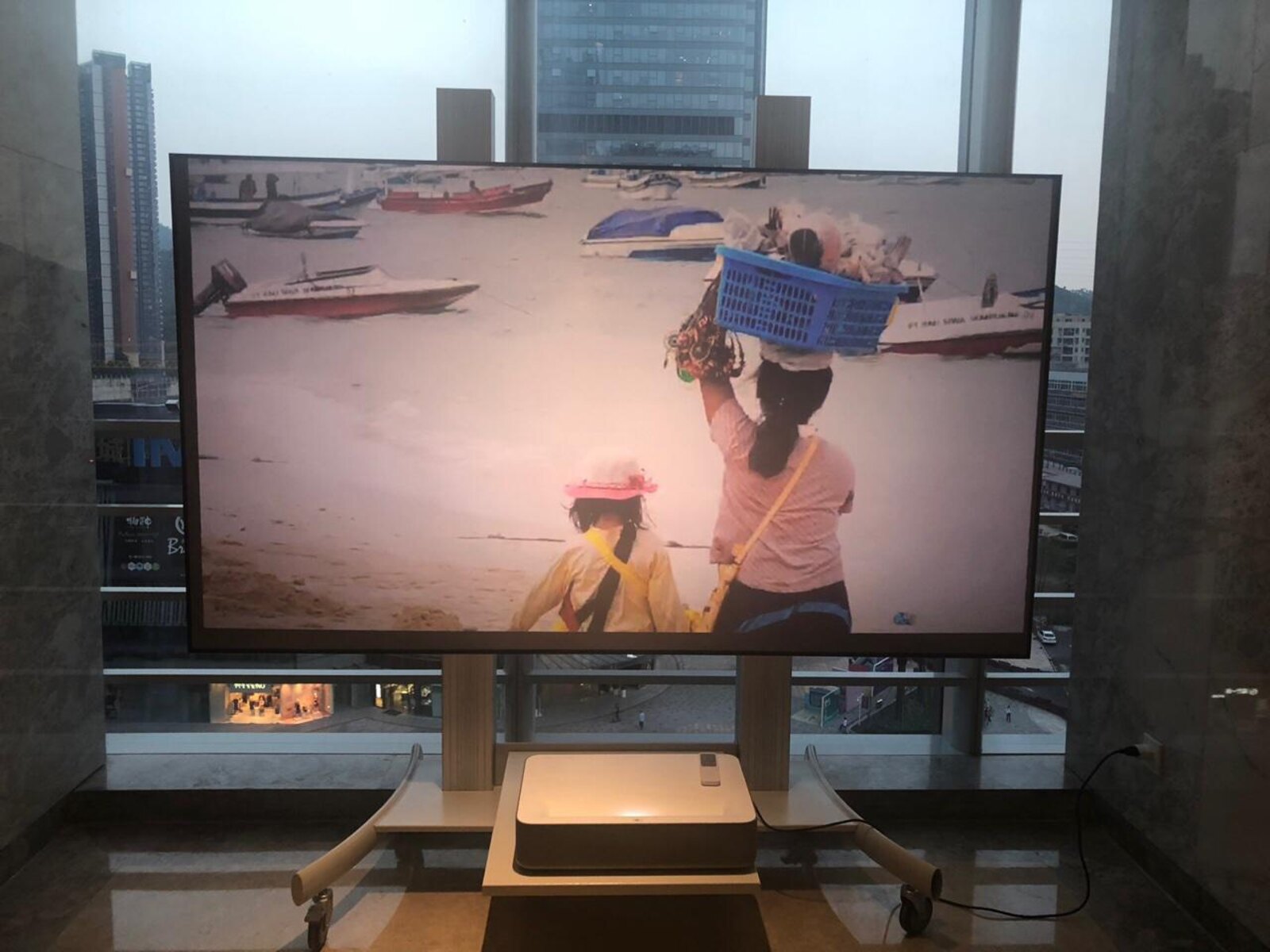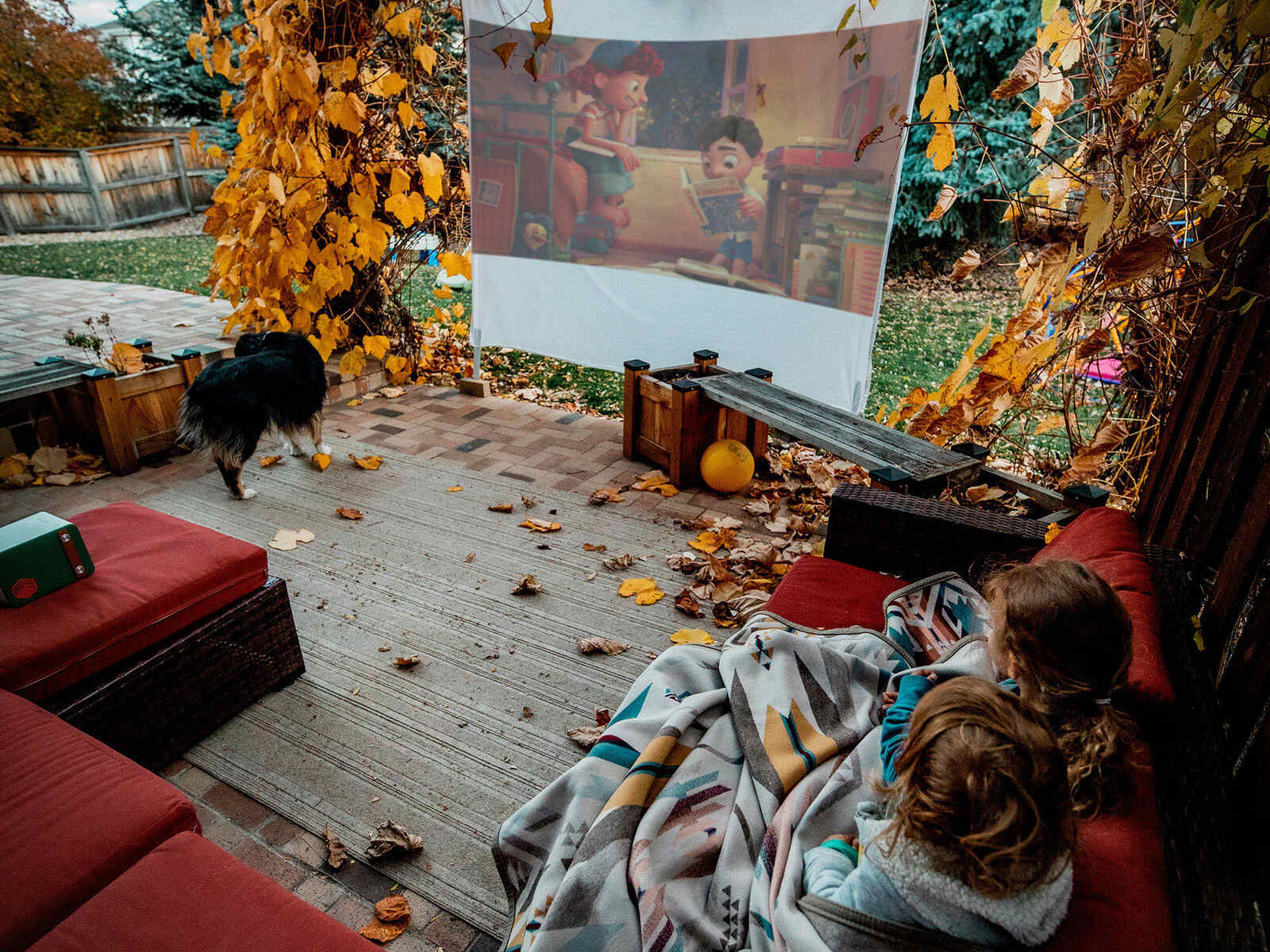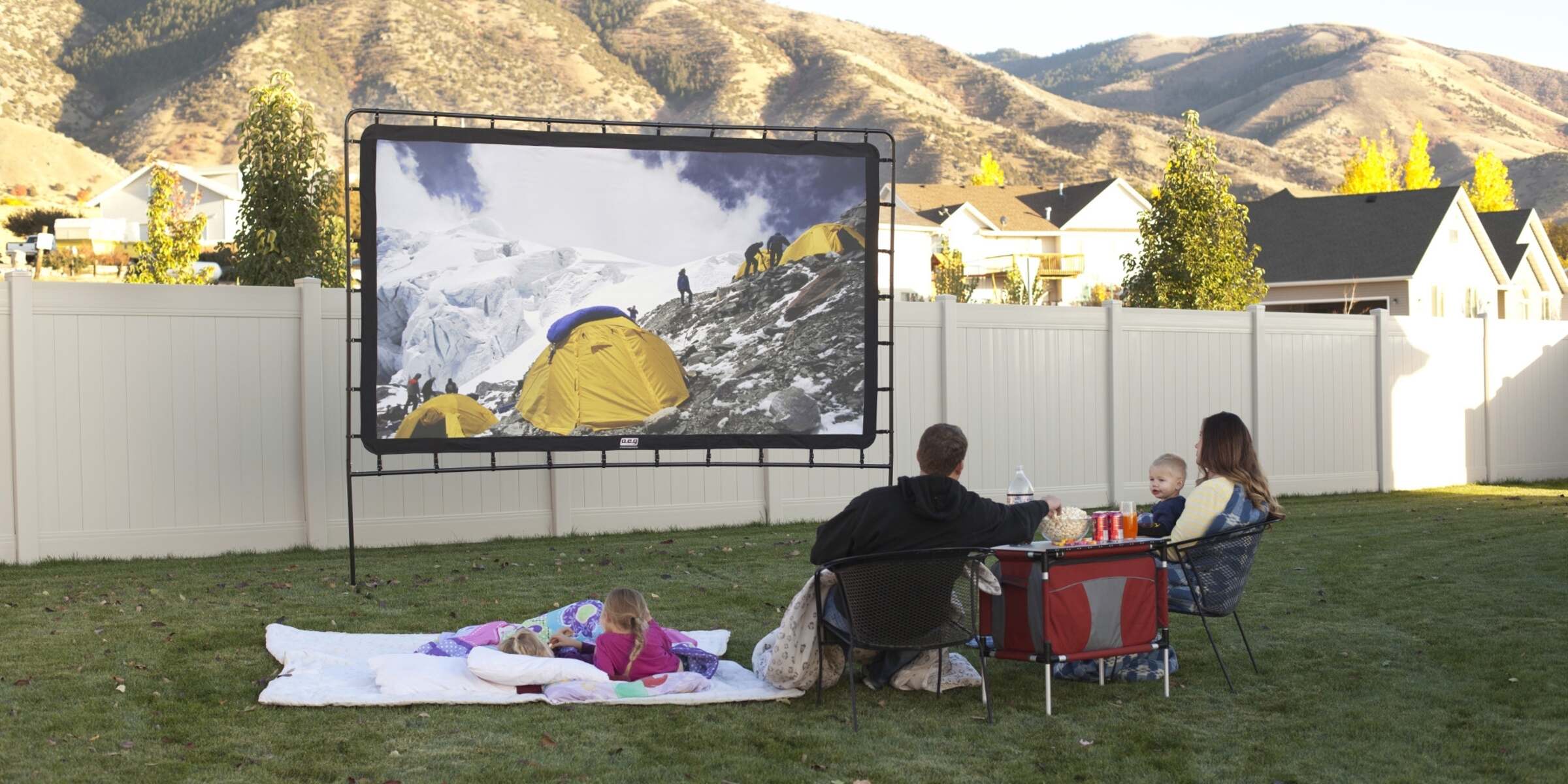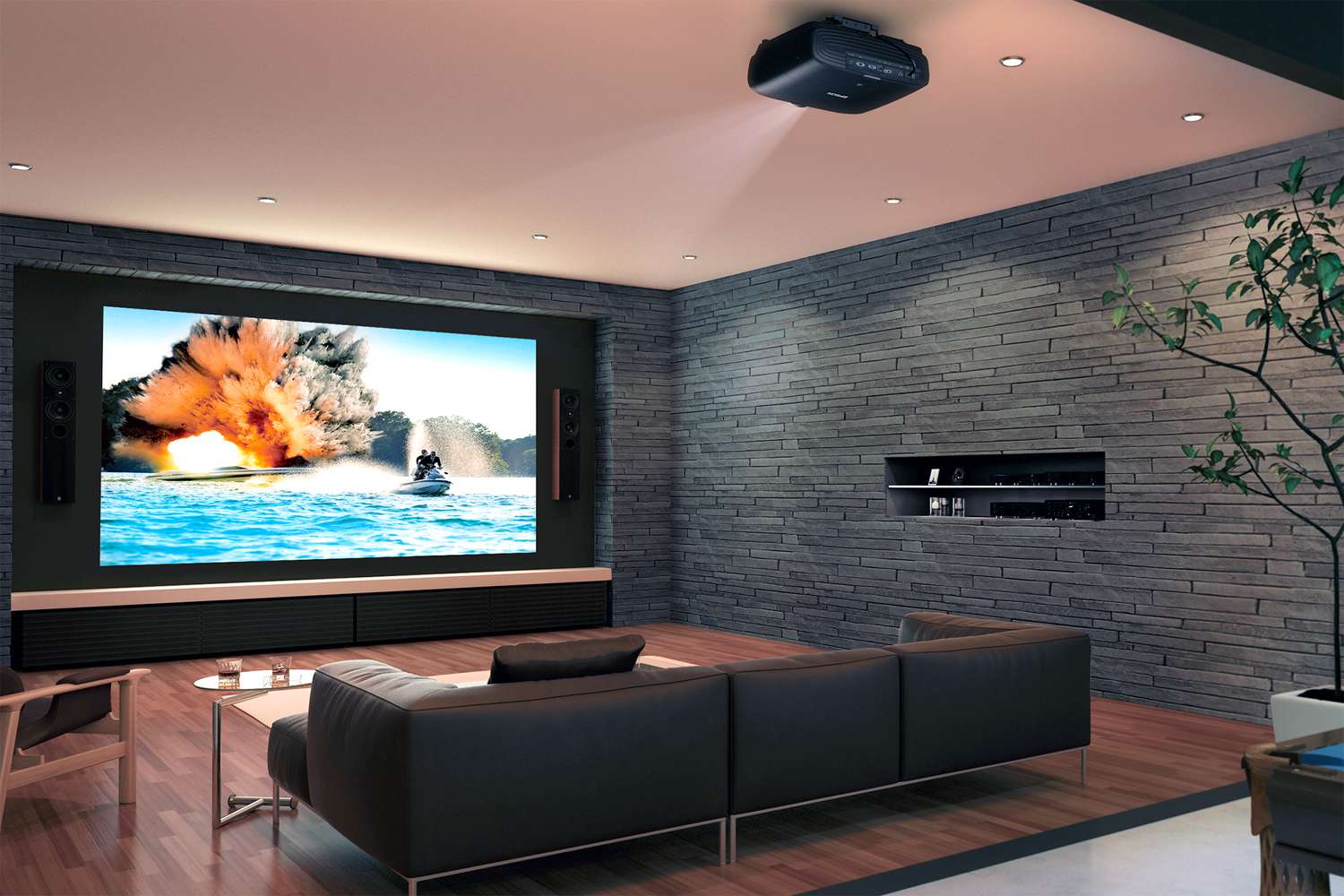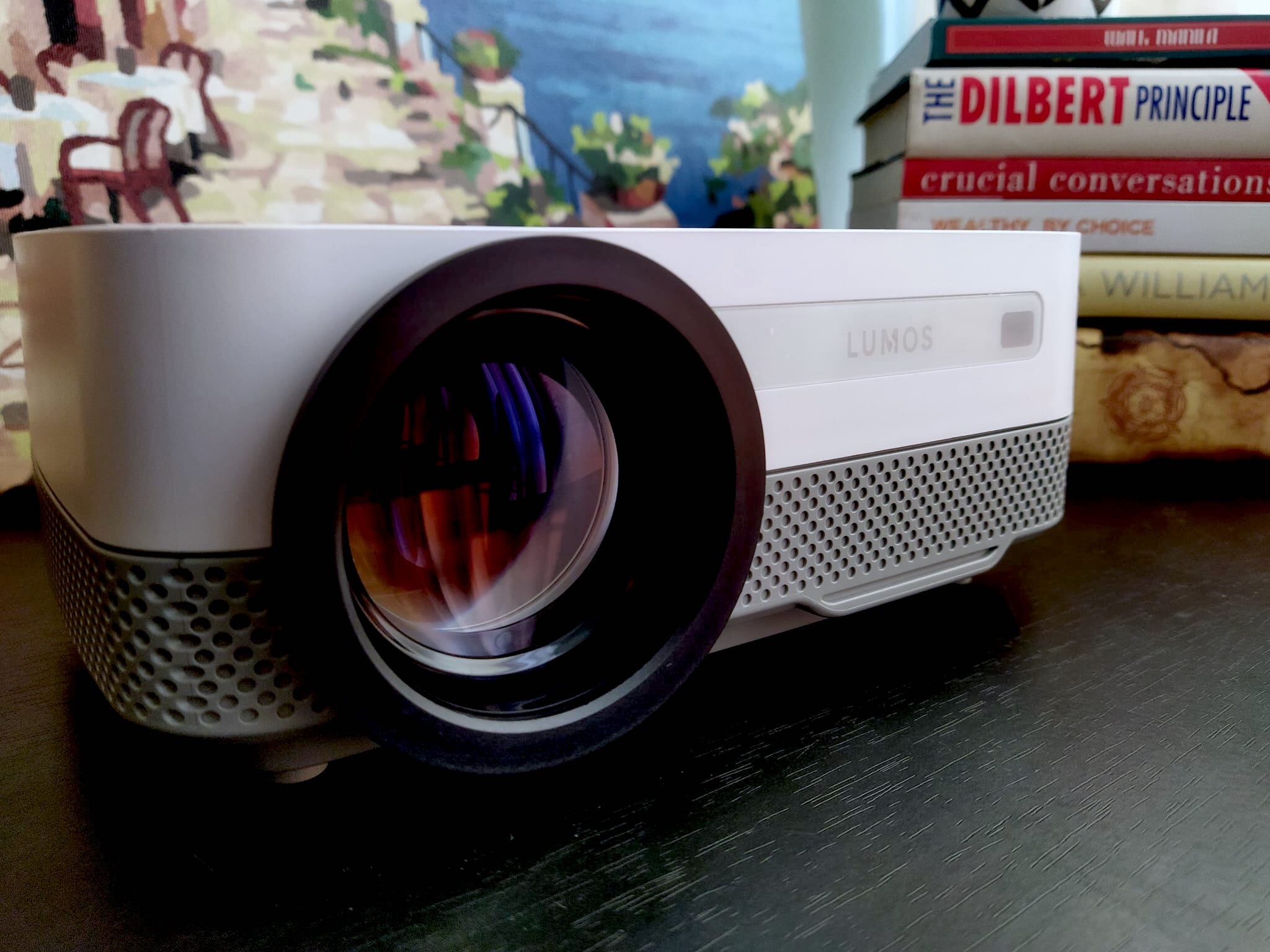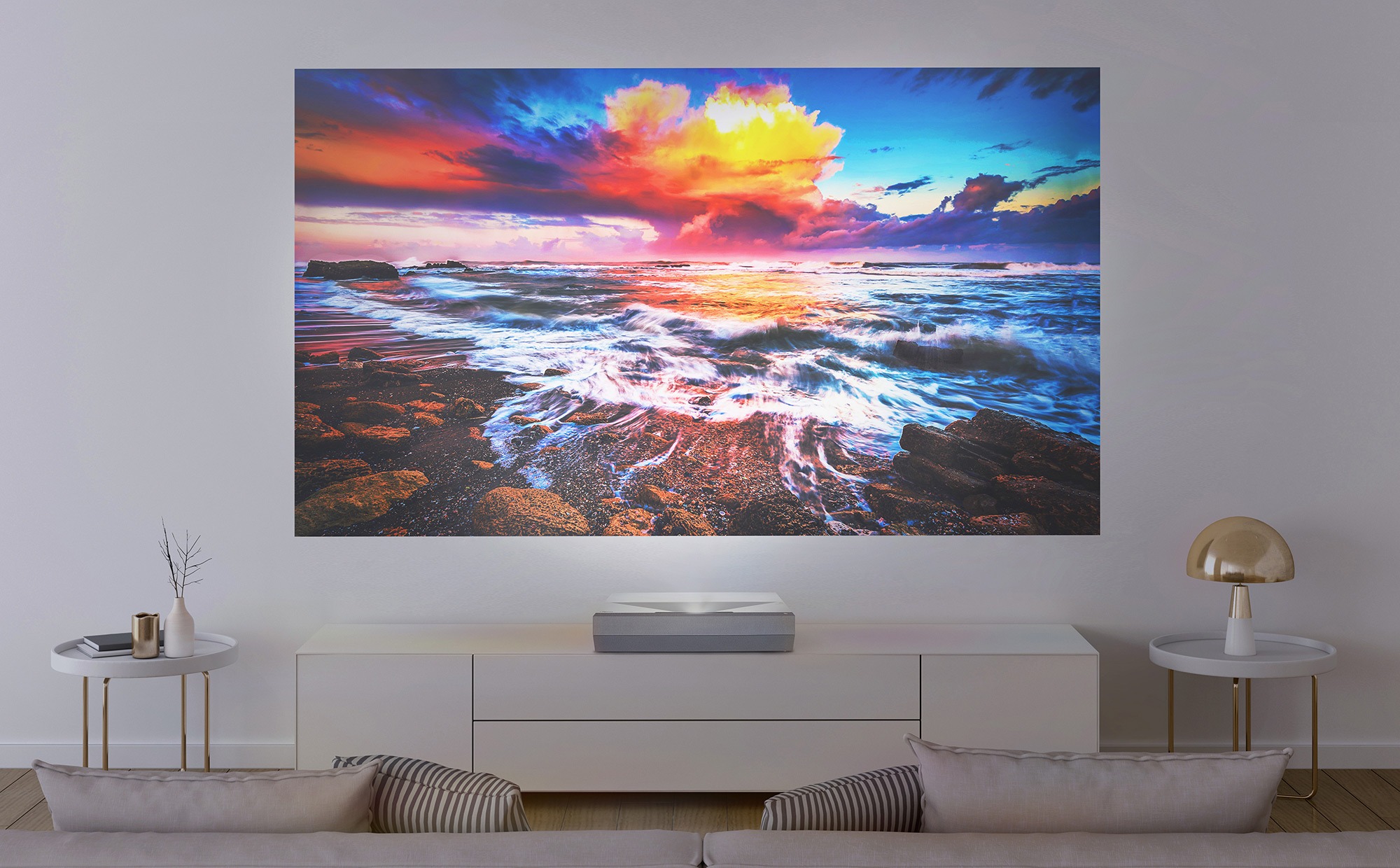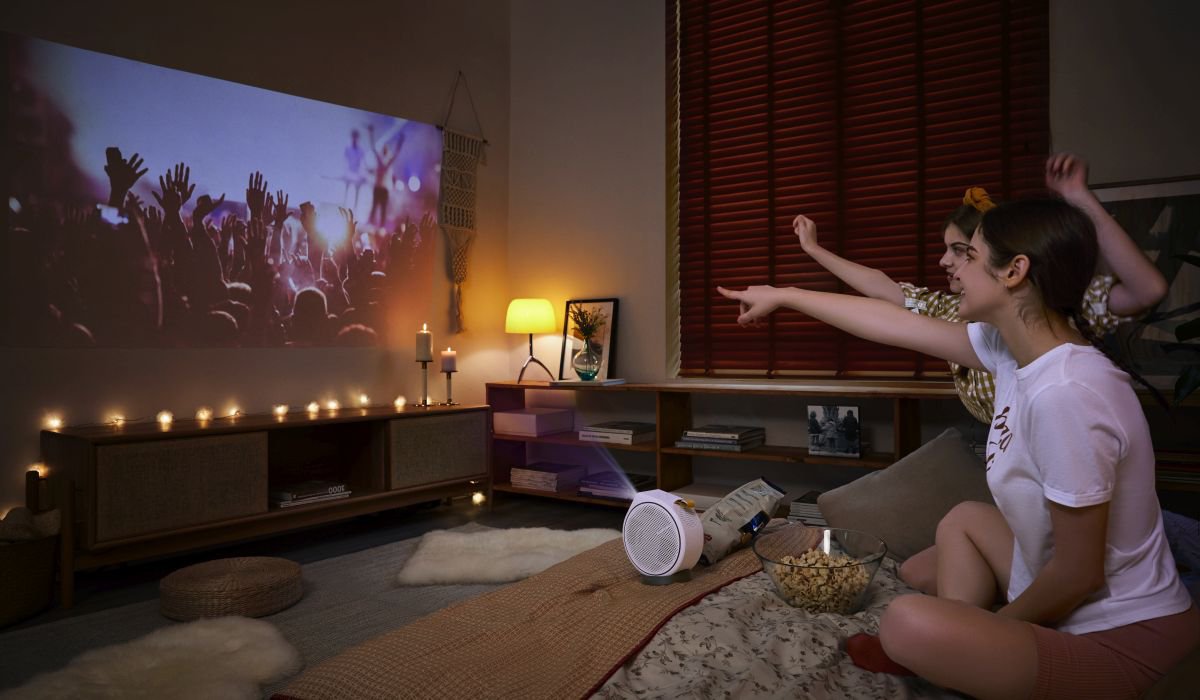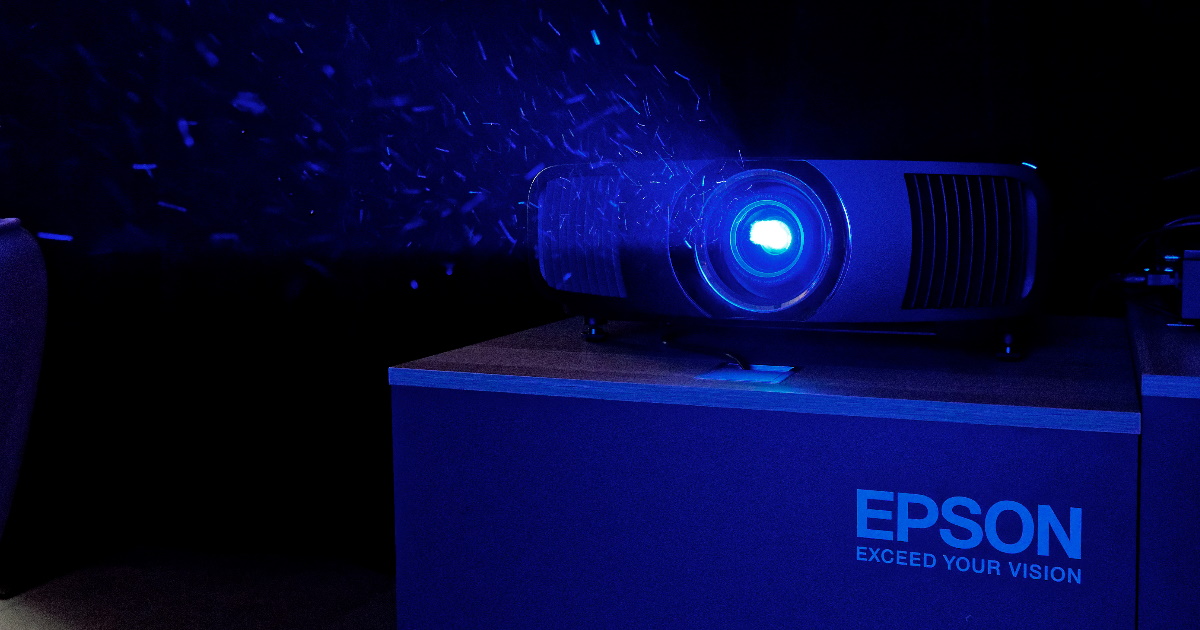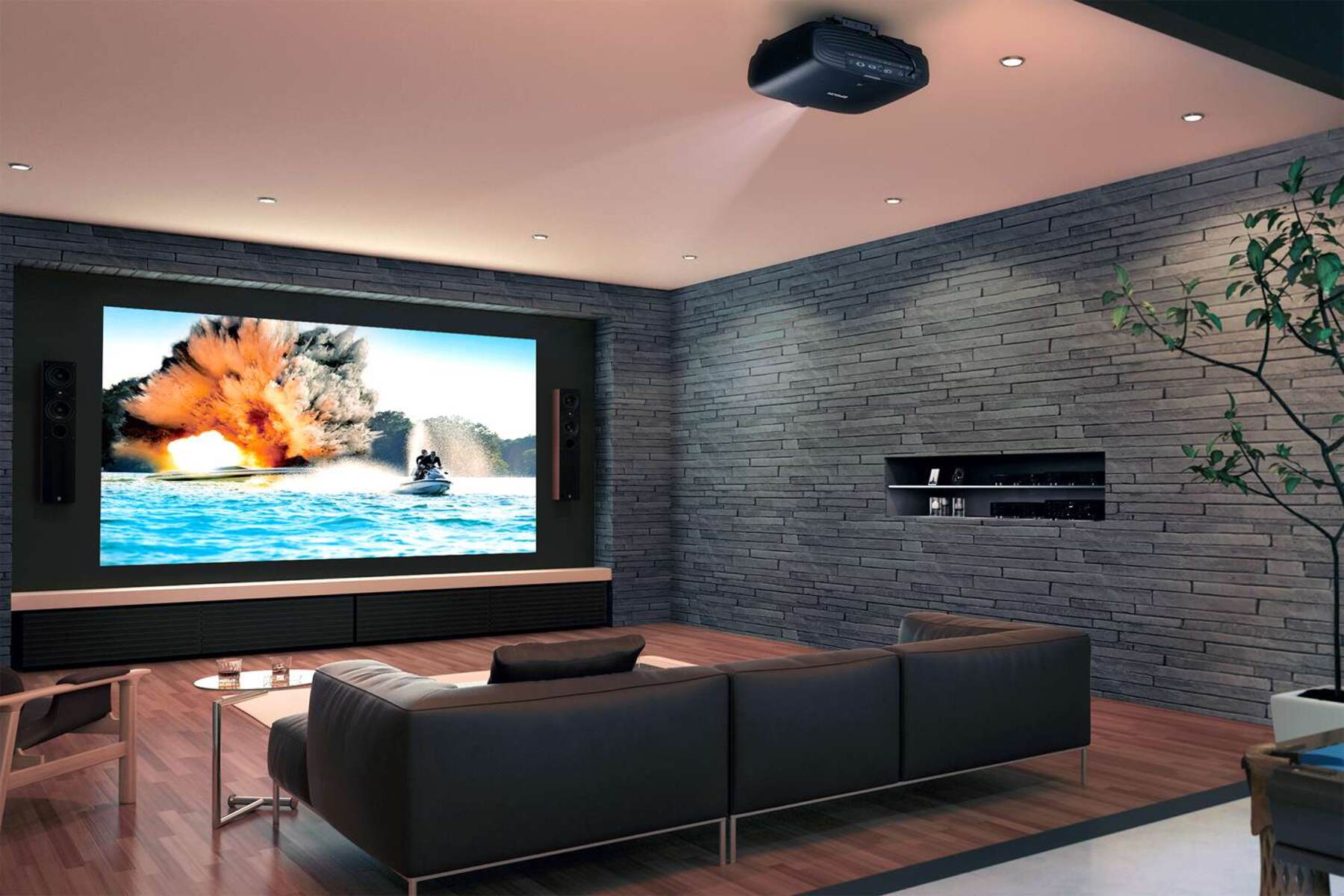Introduction
When it comes to choosing the right projector for your needs, understanding the concept of lumens is essential. Lumens refer to the measure of brightness produced by a projector. The higher the number of lumens, the brighter the projected image will be. But how many lumens do you need specifically for a daylight projector?
A daylight projector is designed to produce clear and vibrant images even in well-lit environments. Unlike traditional projectors, which may struggle to maintain image quality in bright outdoor settings or well-lit indoor areas, a daylight projector is specially optimized to overcome these challenges. By choosing the right number of lumens, you can ensure that your projected image is visible and crisp, regardless of the lighting conditions.
However, finding the ideal lumens range for your daylight projector can be a bit tricky. It’s not just about choosing the brightest option available, as excessive brightness can also lead to image washout or discomfort for viewers. Additionally, the appropriate number of lumens for a daylight projector will vary depending on several factors, such as the intended use, placement, and ambient lighting conditions.
In this article, we will explore the factors to consider when choosing lumens for a daylight projector and provide recommendations to help you make an informed decision. Whether you’re planning a backyard movie night, a business presentation at a bright conference room, or any other outdoor or well-lit indoor projection, we’ve got you covered. Let’s dive in and find out how many lumens you need for your daylight projector.
What Are Lumens?
Lumens are a unit of measurement that quantifies the amount of light emitted by a source. In the context of projectors, lumens refer to the brightness of the projected image. The higher the number of lumens, the brighter the image will be.
Projector lumens are similar to the wattage rating used for traditional light bulbs. While wattage indicates the amount of power consumed by a bulb, lumens measure the amount of light produced. This distinction is important because projectors use different types of technology to create images, such as LCD or DLP, which require varying amounts of light to produce a clear and vibrant picture.
When it comes to lumens, more isn’t always better. The ideal number of lumens for a projector depends on the intended use and the surrounding lighting conditions. Too few lumens can lead to a dim and washed-out image, while too many lumens can result in image distortion and eye strain for viewers.
It’s important to note that lumens are not the only factor that determines image quality. Contrast ratio and resolution also play significant roles in determining how sharp and vibrant an image appears. However, lumens are crucial for ensuring the image is bright enough to be seen clearly.
When considering lumens for a projector, it’s essential to take into account the environment in which it will be used. Factors such as ambient lighting, screen size, and projector placement all impact the required number of lumens. By understanding these factors and their relationship to lumens, you can choose the right projector that meets your specific needs.
What Is a Daylight Projector?
A daylight projector, also known as a high-brightness projector, is specifically designed to be used in well-lit environments. Unlike regular projectors, which may struggle to produce clear and visible images in bright settings, daylight projectors are engineered to overcome these challenges.
Daylight projectors typically have higher lumen ratings compared to standard projectors, allowing them to produce brighter and more vivid images. This increased brightness compensates for the ambient light present in the environment, ensuring that the projected image remains visible and retains its clarity even in well-lit areas.
In addition to higher lumen ratings, daylight projectors often incorporate advanced technological features to enhance image quality. These features can include improved contrast ratios, color reproduction, and image processing capabilities. By combining high brightness with these advanced technologies, daylight projectors deliver optimal performance in challenging lighting conditions.
Daylight projectors find applications in a variety of settings. Outdoor events such as movie nights, sports screenings, or presentations in parks or stadiums benefit from the increased brightness and visibility provided by these projectors. They are also ideal for indoor settings like conference rooms, classrooms, or venues with large windows, where natural daylight can significantly affect image quality.
When considering a daylight projector, it’s essential to evaluate your specific needs and the environment in which it will be used. Factors such as the intended use, ambient lighting conditions, and the size of the projected screen all play a role in determining the optimal lumen rating for your daylight projector.
Now that we have a clear understanding of what a daylight projector is and how it differs from regular projectors, let’s explore the factors to consider when choosing the appropriate number of lumens for your daylight projector.
Factors to Consider When Choosing Lumens for a Daylight Projector
Choosing the right number of lumens for your daylight projector is crucial to ensure optimal image quality in well-lit environments. Several factors come into play when determining the appropriate lumen rating. Let’s explore these factors:
- Outdoor Use vs. Indoor Use: The intended use of the projector is a significant factor in determining the necessary lumens. Outdoor events typically require higher lumen ratings to combat the brightness of the sun or other ambient light sources. On the other hand, indoor settings may not require as many lumens if the ambient lighting can be controlled.
- Projector Placement and Screen Size: The distance between the projector and the screen, as well as the size of the projected image, impact the required lumen rating. Optimal placement and screen size ensure that the projected image remains bright and clear. Larger screens or greater distances may require higher lumens for sufficient brightness.
- Ambient Lighting Conditions: The level of ambient lighting in the environment directly affects the required lumens for a daylight projector. Bright areas with direct sunlight or strong artificial lighting will generally demand higher lumen ratings to counteract the competing light sources. Dimly lit spaces may allow for lower lumen requirements.
- Screen Material and Reflectivity: The type of screen material being used and its reflectivity can impact the brightness of the projected image. Some screens are designed to enhance light reflection, which can help compensate for lower lumen ratings. Conversely, screens with lower reflectivity may require higher lumens to achieve the desired image brightness.
- Viewing Distance: The distance between the projector and the viewers also plays a role in determining the necessary lumens. If the viewers are relatively close to the screen, higher lumens may be required to ensure clear visibility. If the viewers are at a greater distance, lower lumens may be sufficient.
Considering these factors will help you determine the ideal lumen rating for your daylight projector. However, it’s also important to note that personal preferences and the level of image quality you desire may influence your decision. It’s always a good idea to test different lumen settings in your specific environment to find the optimal balance between brightness, image quality, and viewer comfort.
Outdoor Use vs. Indoor Use
Outdoor and indoor settings have distinct lighting conditions that influence the required lumen rating for a daylight projector. Understanding the differences between these two scenarios will help you choose the appropriate lumen level for your specific use case.
Outdoor Use:
When using a daylight projector outdoors, you’ll need a higher lumen rating to combat the brightness of the sun and other outdoor light sources. The natural daylight can significantly impact the visibility of the projected image, making it essential to choose a projector that can produce a bright and clear image in these challenging conditions.
If you’re planning an outdoor movie night or a sports screening during the daytime, a daylight projector with a higher lumen rating will ensure a visible and enjoyable viewing experience. It will counteract the intense sunlight and maintain image quality, allowing everyone to see the details on the screen, even in bright outdoor settings.
Indoor Use:
Indoor environments offer more control over lighting conditions, making it easier to optimize the viewing experience. In well-lit indoor spaces such as conference rooms, classrooms, or venues with large windows, a daylight projector can still offer significant benefits by providing a brighter image.
However, the required lumen rating for indoor use may be lower compared to outdoor use. The ambient lighting in indoor settings is typically easier to manage, allowing for better control over the overall brightness. Depending on the specific lighting conditions, you may be able to choose a daylight projector with a slightly lower lumen rating while still achieving a clear and visible image.
When deciding between an outdoor or indoor use scenario, consider the following factors:
- The amount of natural daylight present
- The presence of artificial lighting and its brightness
- The level of control you have over the lighting environment
- The specific events or activities you plan to host
By considering the differences between outdoor and indoor use and evaluating the lighting conditions of your projected environment, you can determine the appropriate lumen rating for your daylight projector.
Projector Placement and Screen Size
The placement of your projector and the size of the screen will impact the required lumen rating for your daylight projector. Proper projector placement and screen sizing are crucial to ensure optimal image brightness and clarity. Here’s how these factors come into play:
Projector Placement:
The distance between the projector and the screen can affect the brightness of the projected image. If the projector is too far away from the screen, the image may appear dim and lack the necessary brightness. On the other hand, if the projector is too close to the screen, it can result in image distortion or hot spots.
For larger distances between the projector and the screen, you will need a higher lumen rating to maintain brightness. The additional distance allows the light to spread out, resulting in a larger projected image. In this case, a projector with a higher lumen output will ensure that the image remains bright and clear even at the increased distance.
Conversely, if you have a smaller distance between the projector and the screen, you may require a lower lumen rating. The close proximity allows for more concentrated light, so a lower lumen output can still result in a bright and visible image.
Screen Size:
The size of the projected screen also influences the required lumen rating. Larger screens will naturally require more lumens to distribute light evenly and maintain a bright image across the entire viewing area. Small screens, on the other hand, can still provide a bright image with fewer lumens due to their reduced surface area.
As a general guideline, for larger screens, it’s ideal to opt for a higher lumen rating to ensure sufficient brightness. This will help prevent the image from appearing washed out or dim. However, if you have a smaller screen, you may be able to choose a projector with a slightly lower lumen output without compromising image quality.
When considering projector placement and screen size, it’s essential to strike a balance between the two. Ensure that the projector is placed at an optimal distance from the screen to achieve the desired screen size and maintain an appropriate lumen level for brightness. Experiment with different combinations to find the right setup that delivers a clear, vibrant, and well-lit image.
Ambient Lighting Conditions
The ambient lighting conditions in your projection environment play a significant role in determining the required lumen rating for your daylight projector. Understanding how ambient lighting affects image visibility will help you make an informed decision. Here’s what you need to consider:
Bright Lighting:
If your projection environment has bright lighting conditions, such as direct sunlight or strong artificial lighting, you will need a higher lumen rating to overcome the competing light sources. Bright lighting can wash out the projected image and make it difficult to see the details. A daylight projector with a higher lumen output can counteract the brightness and provide a clear, visible image even in such challenging conditions.
Dim Lighting:
In situations where the ambient lighting in your projection environment is already quite dim, a lower lumen rating may be sufficient. Dim lighting allows the projected image to stand out more easily, so you don’t necessarily need an excessively bright image. However, it’s still important to strike a balance and ensure that the image remains visible and well-defined.
Controlled Lighting:
If you have the ability to control the lighting in your projection environment, you have more flexibility in choosing the lumen rating. By adjusting the lighting to a moderate level, you may be able to use a projector with a lower lumen output, as the controlled lighting will not compete with the projected image. This can provide a comfortable viewing experience without sacrificing image quality.
When evaluating ambient lighting conditions, take into account both natural and artificial light sources. Consider the time of day, the positioning of windows or other light sources, and any additional lighting you may use in the environment. By assessing the lighting conditions, you can determine the appropriate lumen rating that will ensure a vibrant and well-illuminated image.
Keep in mind that personal preferences also come into play. Some individuals may prefer a brighter image, even in dimly lit environments, while others may be more comfortable with a slightly lower brightness level. Experiment with different lumen settings to find the optimal balance between brightness and viewer comfort in your specific lighting conditions.
Lumens Recommendations for Daylight Projectors
Choosing the right lumen rating for your daylight projector can significantly impact the visibility and clarity of the projected image. While the specific lumen requirement will depend on various factors, including outdoor or indoor use, projector placement, screen size, and ambient lighting conditions, we can provide some general recommendations to guide you:
Outdoor Use:
For outdoor use, especially during the daytime or in well-lit outdoor areas, it’s recommended to opt for a daylight projector with a lumen rating ranging from 3000 to 5000 lumens. This higher lumen output will help overcome the intense ambient light and ensure a bright and visible image, even in challenging outdoor lighting conditions.
Indoor Use:
When it comes to indoor use, the required lumen rating may vary depending on the specific lighting conditions and the size of the projected screen. As a general guideline:
- For small indoor settings with controlled lighting, such as small conference rooms or classrooms, a lumen rating between 1500 and 2500 lumens can suffice.
- For medium-sized indoor spaces or areas with moderate ambient lighting, such as larger conference rooms or lecture halls, a lumen rating between 2500 and 4000 lumens will deliver a bright and clear image.
- For larger indoor venues, such as auditoriums or event spaces with more significant ambient lighting, a lumen rating between 4000 and 6000 lumens can ensure ample brightness and visibility across a larger screen.
Of course, these recommendations serve as a starting point and should be adjusted based on the specific factors unique to your setup. It’s crucial to consider the combination of factors, including projector placement, screen size, and ambient lighting conditions, to determine the ideal lumen rating.
Additionally, it’s worth mentioning that advancements in projector technology, such as improved image processing and contrast ratios, can enhance image quality even with lower lumen ratings. However, brighter lumens will still be necessary in challenging lighting environments to maintain optimal visibility.
Ultimately, it’s essential to strike a balance between brightness and viewer comfort. Consider your specific requirements, preferences, and the environment in which you’ll be using the daylight projector. Experiment with different lumen settings and seek expert advice if needed to find the ideal lumen rating for your specific application.
Conclusion
Choosing the right number of lumens for your daylight projector is vital to achieve optimal image quality in well-lit environments. Factors such as outdoor or indoor use, projector placement, screen size, and ambient lighting conditions all play a role in determining the required lumen rating.
For outdoor use, a higher lumen rating ranging from 3000 to 5000 lumens is recommended to combat the brightness of the sun and ensure a clear and visible image. In indoor settings, the ideal lumen rating will depend on the specific lighting conditions and the size of the projected screen.
It’s important to strike a balance between brightness and viewer comfort. Consider factors such as screen size, projector placement, ambient lighting, and personal preferences to determine the appropriate lumen rating. Remember that advancements in projector technology can enhance image quality even with lower lumen ratings, but higher lumens will still be necessary in challenging lighting environments.
Experiment with different lumen settings and seek expert advice if needed to find the ideal lumen rating for your specific application. By considering these factors and making an informed decision, you can ensure that your daylight projector delivers a bright, vibrant, and visible image, regardless of the surrounding lighting conditions.







